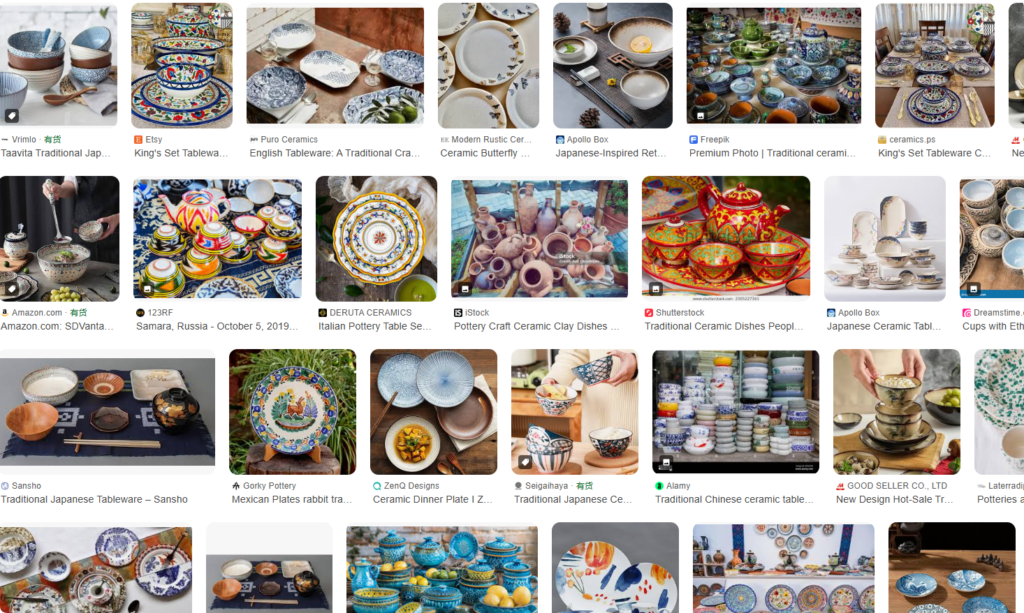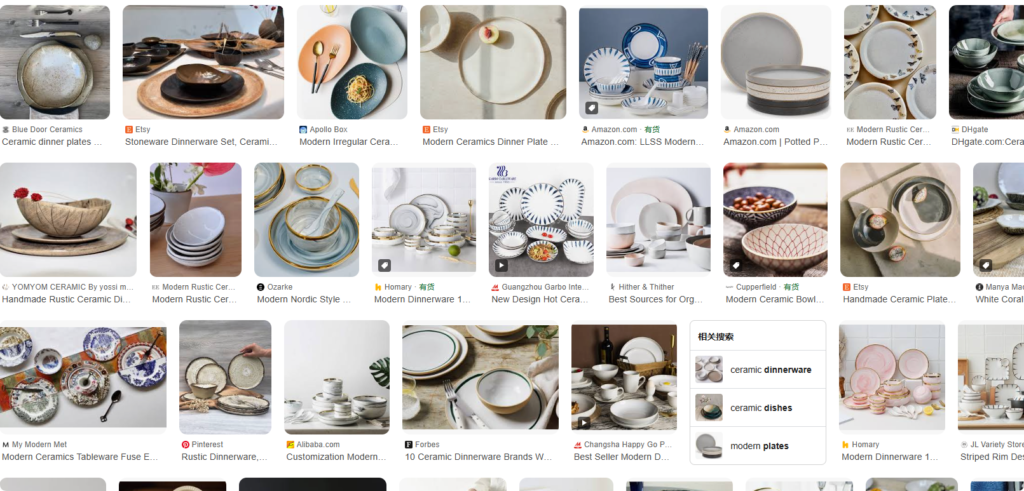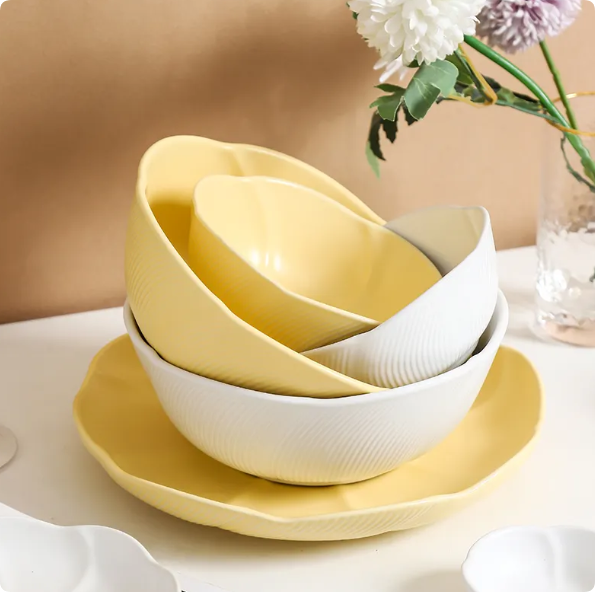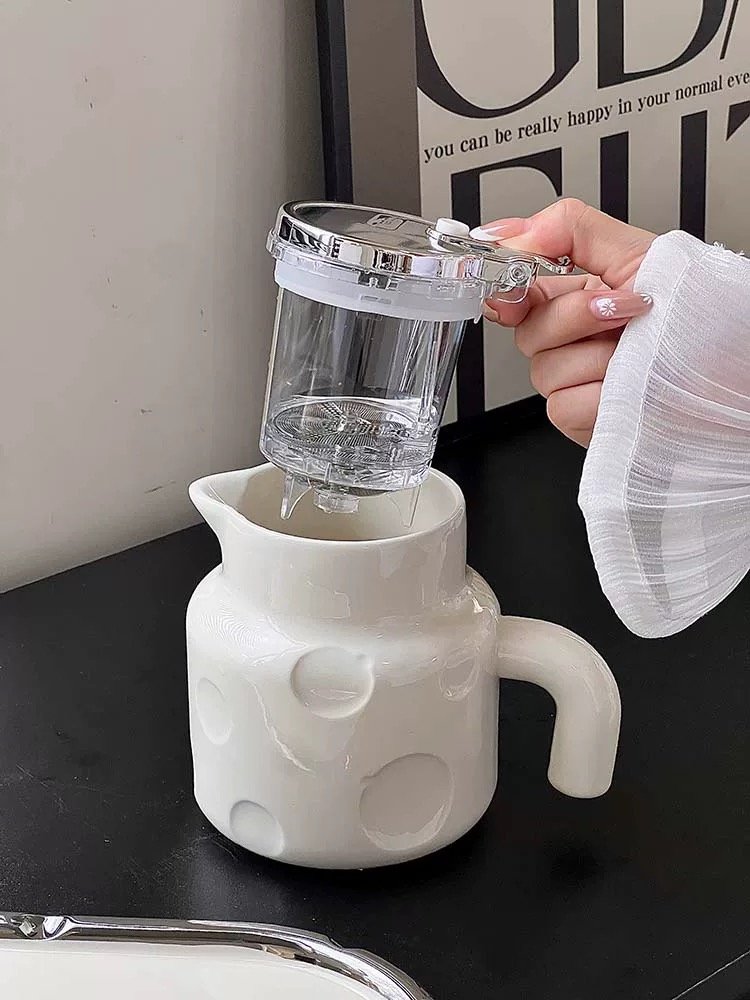Ceramic tableware has long been admired for its versatility, elegance, and timeless appeal. In recent years, we have witnessed a rise in the fusion of modern and traditional aesthetics in ceramic design, creating unique and functional pieces that cater to diverse tastes and trends. This blending of styles results in ceramic products that are both visually appealing and practical, offering something for every occasion, whether it’s a casual family dinner or a special celebration.
In this article, we’ll explore how combining modern and traditional aesthetics in ceramic tableware can offer more than just beauty – it creates a bridge between cultures, elevates dining experiences, and enhances the functionality of everyday objects. As we dive deeper into this theme, we’ll compare various design elements and manufacturing techniques, shedding light on the innovative approaches shaping the ceramic tableware industry today.
1. The Evolution of Ceramic Tableware: Traditional vs. Modern
Traditional Ceramic Tableware
Traditional ceramic tableware has been a staple of cultures around the world for centuries. The craftsmanship, rich textures, and decorative elements of these pieces often reflect the history and heritage of a particular region. Whether it’s the intricate blue-and-white porcelain of China or the hand-painted designs of Mediterranean ceramics, traditional tableware has always been valued for its artistry and craftsmanship.

Key Characteristics of Traditional Ceramic Tableware:
- Handcrafted Elements: Traditional ceramics are often handcrafted, with unique markings and variations in shape.
- Cultural Significance: Each piece may have cultural or symbolic meaning, such as motifs reflecting nature or spiritual beliefs.
- Decorative Designs: Elaborate patterns, floral motifs, and classical shapes are commonly used.
- Glazing Techniques: The use of glazes that enhance the texture and provide a glossy finish is common in traditional ceramics.
Modern Ceramic Tableware
Modern ceramic tableware, on the other hand, focuses more on simplicity, minimalism, and functionality. Inspired by contemporary design principles, these pieces often feature sleek lines, neutral colors, and an emphasis on practical use. Modern ceramics are usually mass-produced using advanced techniques and materials that allow for greater consistency and precision.

Key Characteristics of Modern Ceramic Tableware:
- Minimalist Designs: Modern ceramics often showcase clean, geometric shapes and minimalist patterns.
- Functional Approach: The focus is on practicality, with pieces designed to complement modern lifestyles.
- Use of New Materials: Modern ceramics may include innovative glazing techniques or hybrid materials, such as stoneware or porcelain with added elements.
- Production Techniques: Mass production, using molds and automated systems, leads to uniformity and affordability.
2. The Fusion of Traditional and Modern Designs
The combination of traditional and modern aesthetics in ceramic tableware is not a new concept, but it has gained tremendous popularity in recent years. The blend of these two approaches results in unique tableware pieces that can evoke a sense of nostalgia while remaining relevant to contemporary tastes.
Design Elements in Fusion Ceramics
Shape & Silhouette: Traditional shapes, such as classic bowls and teacups, are often updated with clean, angular lines or softer curves to create a fresh look. This approach adds a modern touch to a traditional form.

Materials & Finish: Many modern ceramic manufacturers incorporate traditional materials like porcelain or earthenware, but they add innovative finishes or glazes that produce matte or glossy effects, resulting in pieces that look both antique and contemporary.
Color Palettes: While traditional ceramics often feature vibrant, hand-painted colors, modern pieces tend to have muted tones, such as whites, greys, or blacks. A fusion of these palettes could involve pastel hues or subtle ombré effects that soften the impact of modern designs while honoring the colors of traditional pottery.
Functional Considerations

The fusion of traditional and modern design also benefits the functional aspect of ceramic tableware. For example, a traditional-style teapot may be reimagined with modern features, such as a built-in strainer or an ergonomic handle, to meet the needs of today’s consumer. Additionally, traditional methods of glazing are combined with modern technology to create more durable and microwave-safe products.
3. Comparison of Key Features in Traditional vs. Modern Ceramic Tableware
Below is a table comparing the key features of traditional and modern ceramic tableware, illustrating how they differ and how they can be harmoniously combined to create unique pieces:
| Feature | Traditional Ceramic Tableware | Modern Ceramic Tableware |
|---|---|---|
| Design Style | Intricate, often with floral or nature-inspired motifs. | Minimalistic, clean lines with geometric shapes. |
| Craftsmanship | Handcrafted with emphasis on artisanal skills. | Mass-produced with precision techniques. |
| Material | Earthenware, porcelain, and stoneware often with unique textures. | Primarily porcelain, with some use of stoneware and hybrid materials. |
| Color Scheme | Rich, vibrant colors or earth tones. | Neutral tones, blacks, whites, pastels, and metallics. |
| Functionality | Focus on beauty, with some attention to practicality. | High focus on practicality, such as microwave-safe or dishwasher-safe items. |
| Cultural Significance | Deeply connected to specific cultures and traditions. | Focused on modern lifestyles, functionality, and aesthetics. |
| Production Techniques | Hand-painted, thrown by hand, or wheel-turned. | Molds, automated systems, or slip-casting techniques. |
| Durability | Can be fragile due to handcrafted nature. | Generally more durable and resistant to daily wear and tear. |
4. How to Incorporate Both Styles into Your Dining Collection
Combining modern and traditional aesthetics can be done in a variety of ways. For those looking to update their ceramic tableware without losing the beauty of traditional designs, here are some practical tips:

- Mix and Match: Combine modern pieces with traditional ones to create an eclectic yet harmonious table setting. For instance, pair a minimalist modern dinner plate with a traditional floral-patterned bowl for a unique contrast.
- Accent Pieces: Use traditional items, like teapots or serving dishes, as accent pieces alongside modern dinnerware. This can create a more dynamic table setting without overwhelming the space with one particular style.
- Unified Color Scheme: Even though traditional and modern pieces may differ in design, keeping a cohesive color palette can help the two styles blend seamlessly. Consider muted tones or earth colors that tie everything together.
5. EKA’s Role in Creating the Perfect Blend of Traditional and Modern
As a leading manufacturer of ceramic tableware, EKA embraces the fusion of traditional and modern aesthetics to create versatile and stunning pieces. By offering both OEM and ODM services, EKA helps buyers bring their creative visions to life, whether they are looking for traditional, modern, or hybrid designs.
EKA’s team of skilled artisans and designers work closely with clients to craft bespoke tableware that reflects both timeless tradition and contemporary trends. Whether you’re a homeware buyer, a gift merchant, or a cross-border e-commerce seller, EKA’s commitment to quality and design ensures that your ceramic products stand out in the global market.
Why Choose EKA?
- Customization: EKA’s OEM and ODM services allow for fully customized designs that suit both modern and traditional aesthetics.
- Quality: We use high-quality porcelain and stoneware to ensure durability and beauty in every piece.
- Global Reach: With a wide range of styles and production capabilities, EKA caters to customers worldwide, including homeware buyers, gift merchants, and e-commerce sellers.
- Innovative Design: We constantly blend traditional techniques with modern trends to offer unique and on-trend tableware collections.
Conclusion
In the evolving world of ceramic tableware, the fusion of modern and traditional aesthetics brings the best of both worlds together. By combining the rich craftsmanship and heritage of traditional ceramics with the sleek designs and functionality of modern pieces, this approach creates timeless, versatile tableware that meets the needs of today’s consumers. Whether you’re curating a homeware collection or offering bespoke designs to global clients, EKA is here to provide high-quality ceramic tableware that brings innovation and tradition to the table.

